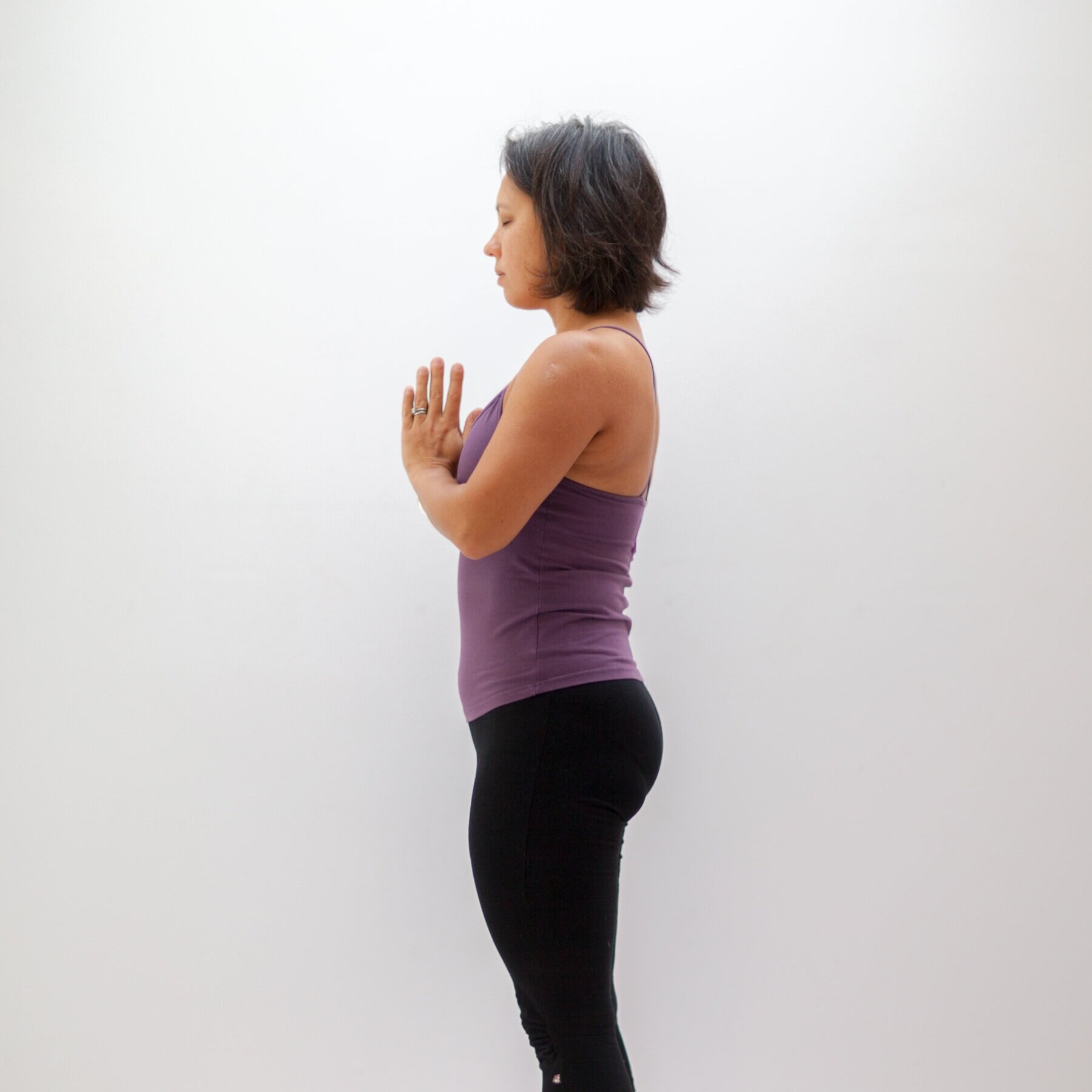How does your Posture Feel? ('Habituated Movement')
I like to encourage students to look out for any habitual patterns of movement which may lead to the creation of tension in the body. The practise of postures and sequences of movement within a yoga class can help us to become aware of these patterns and it is only once we become aware of them that we can begin to re-educate our bodies to move differently gradually creating new, healthier habits or patterns.
For example, in practising Tadasana ('mountain pose') I have observed that I tend to stand slightly unevenly on my feet (leaning onto the outer edges) and tense my shoulders up towards my ears.
By practising this pose daily and focussing on grounding evenly down through my feet and releasing my shoulders I can create new patterns of movement that will become ingrained and hopefully replace the old unhealthy patterns that create potential issues of bad posture and muscular tension (which can lead to all sorts of other issues). It is worth noting, however, that regular practise is necessary in order to replace such deeply ingrained, subconscious habits.
Sometime ago my husband gave me Peter Blackaby's book 'Intelligent Yoga' - it is a wonderful, well-thought out and thought-provoking book. In it Peter states that "If we are to change patterns, we first have to unearth the habit that is embedded in our movement - to understand how we move". Yoga helps us to take this first step of understanding how we move.
Something to try at home:
1. Stand in front of a mirror with feet hip distance apart, arms by your side
2. Allow your breathing to settle, becoming smooth and slow for 5 breaths
3. Close your eyes and try to notice any imbalances or tension in the way you are standing, in particular sense whether there is an even distribution of weight through the feet
4. Open your eyes and observe yourself in the mirror - again, notice any imbalances such as raised shoulders, slouching, shortening on one side of the body, whether the head balances evenly on the neck
5. Choose just 1 or 2 of these 'imbalances' to work with (eg actively releasing the shoulders/tilting the head to come into a more balanced position/standing evenly on the feet) and take 10 breaths in your newly modified standing pose, observing how this feels
6. Practise point (5.) every day for 2 weeks or longer and notice whether the new way of standing begins to feel more 'natural'.
